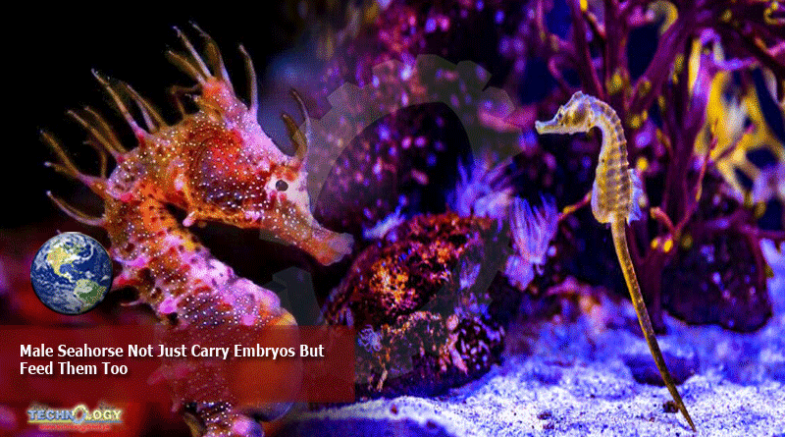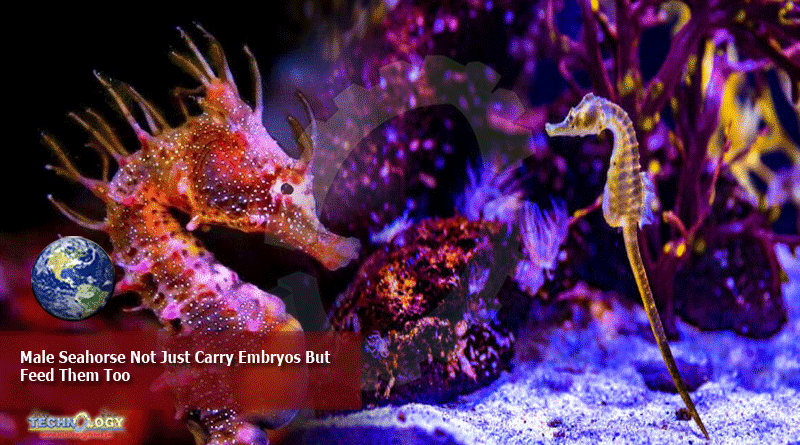In seahorse mating pairs it’s the male who does the heavy lifting during pregnancy.

They can store thousands of embryos in their brood pouch, which eventually spurt out in a spray of teensy tiny “newborn” seahorses. Until now, scientists had no idea if or how these embryos were fed during their gestation but a new study published in the Journal of Comparative Physiology has uncovered that these hard-working fathers do indeed feed their many, many young.
Led by the University of Sydney (USYD) Honours student Zoe Skalkos in collaboration with Dr James Van Dyke at La Trobe University and Dr Camilla Whittington from USYD’s School of Life and Environmental Sciences, the study adds weight to existing genetic evidence of male seahorses’ role in feeding developing embryos. It constitutes the first experimental evidence of “patrotrophy” (dads transferring nutrients to their babies).
The team compared the dry weights of newly fertilized Hippocampus abdominalis, or pot-bellied seahorse, eggs with those of fully developed neonates and looked at the lipid content at the start and end of the embryos’ development. Their results showed there was no decrease in lipid mass suggesting that the resources being used up by the developing embryos were being replaced by the brooding father.
Seahorses belong to a group called the syngnathid fishes, alongside pipefishes and sea dragons, and they are the only vertebrates known to science to exhibit male pregnancy. Like a tiny marine kangaroo, the expectant fathers protect their offspring as they develop inside a pouch on the front of their body. Little was known about the exact technicalities of what went on behind this brood pouch, but this research has successfully taken a quick peek inside, figuratively speaking. Not only do we now know the fathers feed their babies, but it’s also thought that they do this through a kind of placenta, similar to human pregnancy.
“This work adds to the growing evidence that male pregnancy in seahorses could be as complex as female pregnancy in other animals, including ourselves,” said Dr Whittington in a statement. “We now know that seahorse dads can transport nutrients to the babies during pregnancy, and we think they do this via a placenta. It’s not exactly like a human placenta though – they don’t have an umbilical cord, for example. We need to do further histological work to confirm this.”
This news was originally published at iflscience.com
